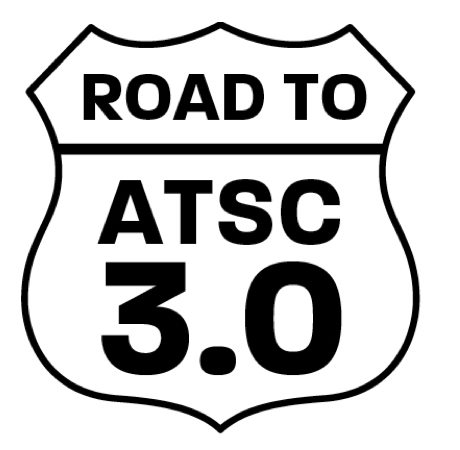ATSC 3.0: The Road Ahead
With any anniversary, it's tempting to gaze reflectively in the rear-view mirror and remember how far we've come. But on this first anniversary of the adoption of the ATSC 3.0 standard as voluntary upgrade to America's digital TV transmission system, the Advanced Television System Committee has its eyes fixed on the road ahead.

A flurry of recent announcements underscores that the FCC had it right when they permitted broadcasters to innovate and develop a companion service that could bring together broadcast TV with broadband content.
More than six years in the making, Next Gen TV powered by ATSC 3.0 is the result of a collaborative effort of hundreds of talented individuals and innovative companies from around the world.
Deployments of ATSC 3.0 are underway.
South Korea initiated the ATSC 3.0 broadcast TV service with a focus on the benefits of Ultra HDTV in time for the Winter Olympics. The TV networks in Seoul have been broadcasting for over a year and a half, with stunning results.
Here in the United States, broadcasters in Texas, Arizona, North Carolina, Illinois, Oregon, and Maryland are now "on the air" with ATSC 3.0. The first public TV broadcaster—WKAR-TV at Michigan State University in East Lansing—is transmitting ATSC 3.0, and a small market station in Santa Barbara, Calif. is also investing to show how Next Gen TV can provide more targeted emergency alerts.
In Brazil, ATSC 3.0 experimental broadcasts of World Cup Soccer showed unique Broadcast-Broadband interactive applications like choosing camera angles, while watching the matches in stunning 4K UHD resolution.
And in India, development of a chip optimized for ATSC 3.0 mobile devices is under development as discussions continue about the convergence of broadcast & broadband technologies.
The Road Ahead is one marked by mileposts. As the saying goes, this is a journey, not a destination. In fact, I don’t think there really is a "end of the road." That's why I think we'll be seeing ATSC 3.1, 3.2 and so on—and eventually ATSC 4.0 on a future roadmap.
That also points to a reality for broadcasting. Innovation needs to be a constant development. Because deployment of the standard by broadcasters—and by consumer electronics companies—is voluntary, that doesn't mean we can let up on the gas pedal. Advancements in technology won't just stop because broadcasters are going too slow. No, just the opposite—innovation will blow by us in the fast lane.
Complementing our ongoing standards work and evangelism are ATSC Implementation Teams for Conformance, Advanced Emergency Alerting, and Interactivity & Personalization. A new ATSC Planning Team is looking at future advanced codecs and other future video technologies like 8K, and we’re launching another Planning Team on automotive applications.
Development of technical standards is a team sport. And we are fortunate at the ATSC to have so many experts in the broadcasting and related industries working together to pave the way on the Road Ahead.
Mark Richer is the president of the Advanced Television Systems Committee.
For comprehensive coverage on ATSC 3.0, visit TV Technology's ATSC3 silo.
Get the TV Tech Newsletter
The professional video industry's #1 source for news, trends and product and tech information. Sign up below.
